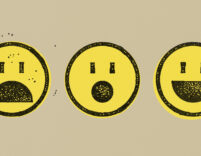Be Open to Being Wrong: The Creative Necessity of Debate
In a creative agency, ideas are currency. But great ideas rarely emerge fully formed—they’re shaped, refined, and polished through the fires of discussion and debate. At AB&C, we believe that disagreement doesn’t mean disrespect. In fact, it’s not just welcome—it’s necessary. Creative progress demands differing perspectives, thoughtful challenges, and the courage to question assumptions.
This belief comes from experience. Some of our best work has grown out of spirited conversations and opposing viewpoints. And yet, fostering a culture where disagreement thrives without crossing the line into disrespect requires intentional effort. It means rethinking how we engage with one another and, sometimes, redefining what success looks like in a team dynamic.
The Value of Healthy Disagreement
Disagreement is not a sign of dysfunction; it’s a sign that people care. Passion for an idea or a direction often leads to pushback—sometimes strong pushback. But this pushback is vital. When team members bring their unique perspectives, they open the door to conversations that enrich ideas and expand creative possibilities.
Healthy disagreement keeps us from settling for ‘good enough’ ideas. It challenges groupthink and encourages innovative thinking. Without it, creativity risks stagnation, and we may fail to fully serve our clients or reach the potential of what we’re capable of achieving as a team.
I can vouch for this personally—some of the best work I’ve been part of started with heated debates among close colleagues. I’ve had moments where I walked out of a meeting thinking, There’s no way I’m agreeing with that idea, only to find myself passionately defending it a week later. That’s the beauty of this process—it doesn’t just evolve the work, it evolves us too.
Making Space for Dialogue and Debate
So how do we create space for productive dialogue and debate? The fact is: it’s tough. It doesn’t just happen naturally. Teams need a structure and a culture that welcomes diverse perspectives and ensures everyone feels safe to voice their thoughts. This means being deliberate about how we approach conversations and ensuring that all voices are heard, not just the loudest or most senior in the room.
This means we’re asking ourselves critical questions:
- Are our meetings structured in ways that encourage differing perspectives rather than silence them?
- Do our team members have the time and space to articulate their ideas fully before the group responds?
- Are leaders modeling constructive disagreement by encouraging challenges and demonstrating a willingness to be persuaded?
These are questions without easy answers, but the effort to address them is essential if you want to keep making better and better work. Creating a culture of dialogue and debate starts at the top, with leaders setting the tone. Yet it also requires buy-in and accountability from everyone in the organization.
The Responsibility of Every Team Member
Creating a culture of productive disagreement isn’t solely a leadership responsibility. Every team member has a role to play. Here are some principles we hold ourselves to:
- Be Curious: Approach disagreements with curiosity, not defensiveness. Ask questions to dig deeper into someone’s perspective, aiming to understand rather than rebut.
- Be Respectful: Always critique ideas, not people. Choosing the right words and maintaining a thoughtful tone can mean the difference between a constructive conversation and an unproductive argument.
- Be Open to Being Wrong: And let me tell you, — this one can be tough. Strong opinions are valuable, but they shouldn’t become immovable. Flexibility in the face of better ideas or perspectives is a hallmark of true collaboration.
- Stay Goal-Oriented: Remember that the purpose of debate is not to “win” but to arrive at the best possible solution for the client or the project.
Finding the Balance Between Passion and Positivity
In a fast-paced, high-pressure environment, it’s easy for disagreements to become heated. Passion is a good thing—it means we care about the work. But it’s also essential to balance that passion with positivity. A culture that prioritizes constructive dialogue over combative conversations will build trust within teams and strengthen the creative process.
At AB&C, we encourage our teams to view debates as opportunities, not obstacles. It’s a chance to show vulnerability, to test ideas, and to grow together. After all, the best creative work is rarely the product of one person’s vision—it’s the result of many voices coming together, refining, challenging, and ultimately building something better than any single person could have imagined.
Why It Matters
Disagreement is where innovation lives. By pushing back, we push forward. Debate and dialogue drive us to move beyond our comfort zones and uncover solutions that may not have been obvious at first glance. This process isn’t just better for the work—it’s better for the people doing the work. It fosters trust, builds stronger teams, and cultivates an environment where creativity can flourish.
When disagreement is respectful, thoughtful, and goal-oriented, it becomes a powerful tool for growth – for the agency, the client and the individual. It teaches us to listen, to articulate our ideas clearly, and to value the perspectives of others.
At AB&C, we know that great ideas don’t come from avoiding conflict. They come from engaging with it—constructively, respectfully, and with a shared commitment to our clients and each other. So lean into the tough conversations. Let’s embrace the beautiful friction that makes magic happen. And let’s keep the dialogue going.







